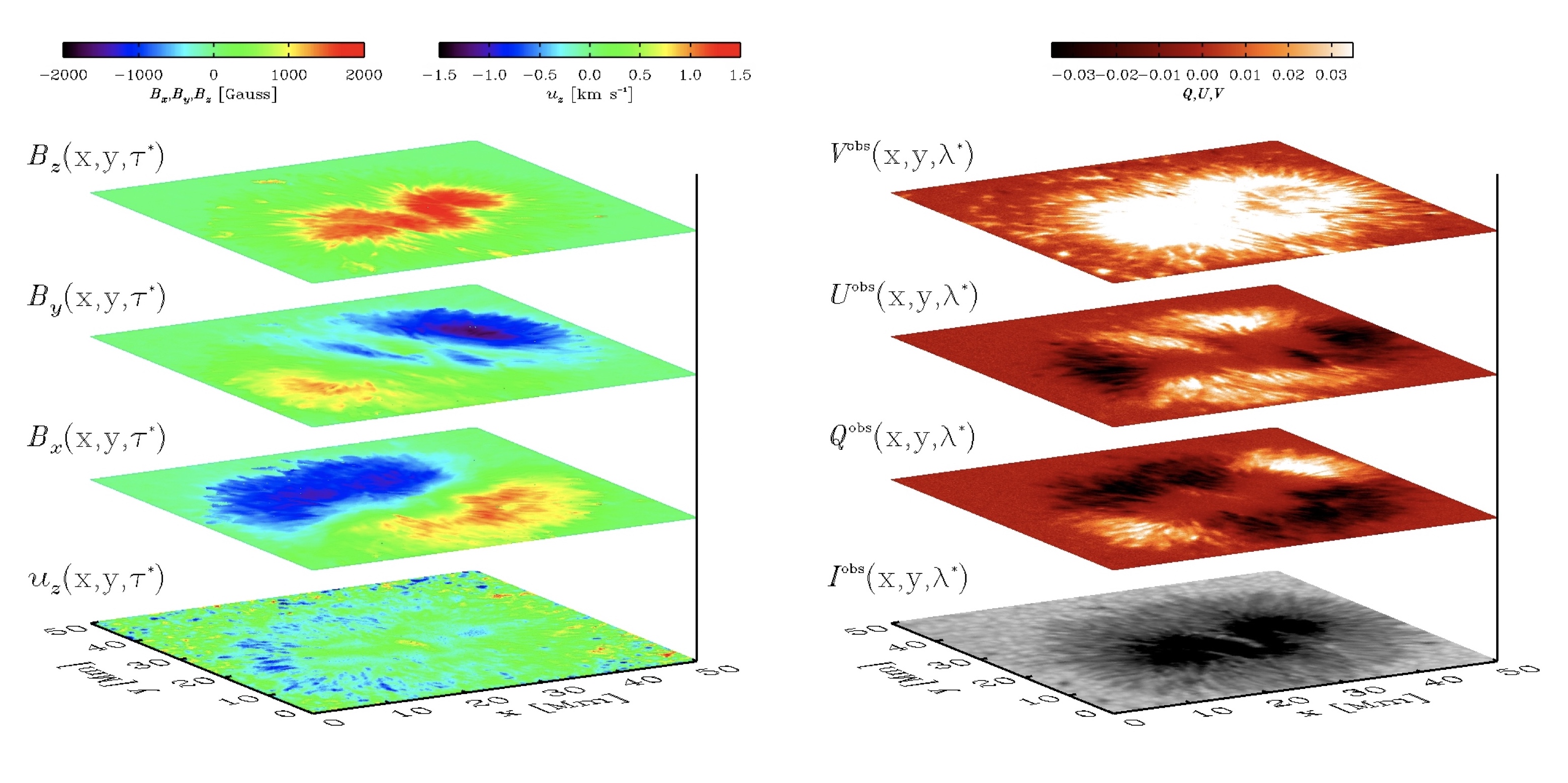In order to determine the Sun's magnetic field, we actually measure a property of light called polarization. A new post written by Dr. Juan Manuel Borrero, from the Leibniz Institute for Solar Physics (Germany).

Have you ever heard how strong the magnetic field on the solar surface is? 1000 Gauss? 2000 Gauss? Ever wonder how do we know this? We certainly do not travel there with a magnet on our hands! In fact, we do not measure the magnetic field. What we really measure with our instruments is light, polarized light.
Yes, we do not measure the magnetic field, we infer it based on equations that describe how the polarization properties of the light are affected by the magnetic field. In the figure above you will see our actual measurements on the right. These are the so-called Stokes parameters, I for intensity (bottom), Q and U for linearly polarized light (middle), V for circularly polarized light (top). With this we infer the actual magnetic field on the solar surface (left panels) along the three spatial dimensions: B_x, B_y, B_z.
Is this indirect way of inferring the magnetic field something we physicist do? Indeed, all the time! Just think about your typical household mercury-in-glass (aka quicksilver) thermometer. Do you really think you are measuring your or your baby's temperature? Wrong! All you are measuring in the length of the mercury inside the tube. Since we know how much the Mercury dilates/contracts when the temperature increases/decreases, we can then determine the actual temperature. Got it? Well, that is exactly how we determine the magnetic field on the Sun: we measure the polarization properties of the light and since we know how it changes when the magnetic field is applied, we can then determine the magnetic field.
Because the physical processes that describe both phenomena (dilation/contraction of mercury and polarization of light) are so well-established and so well-known oftentimes we, by a slip of the tongue, simply say that "we measure the magnetic field". Now you know what we mean by this.
Of course, the better we obtain the polarization of the light the more accurately we can determine the magnetic field. The European Solar Telescope is specifically designed with this in mind. Owing to its large primary mirror and to its compensation optics, we will make the most precise measurements of the polarization properties of the solar light ever. Moreover, EST will perform such measurements in multiple wavelengths simultaneously, which will make it possible to infer the magnetic field in many different layers of the solar atmosphere, thus allowing us to reconstruct the magnetic field not only on the surface, but in three dimensions.
